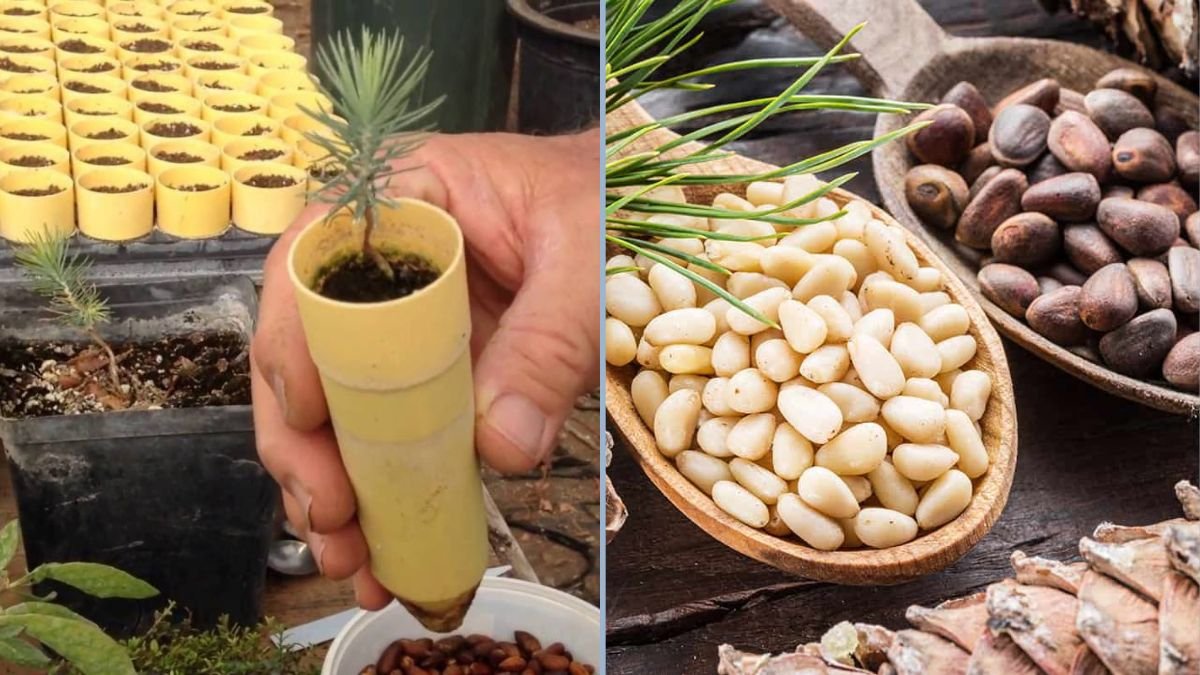Pinyon pine trees (Pinus edulis and related species) are prized for their delicious nuts, drought tolerance, and beautiful evergreen presence. While often associated with the southwestern United States, these trees can be cultivated in gardens, backyards, or even large containers. Propagating pinyon pines from nuts (seeds) is a rewarding way to grow your own trees, ensuring a supply of homegrown pine nuts while enjoying the natural beauty and ecological benefits of these resilient pines.
This comprehensive guide will walk you through the step-by-step process of selecting, preparing, germinating, and caring for pinyon pine nuts, ensuring successful propagation even for novice gardeners.
Why Grow Pinyon Pines from Nuts?
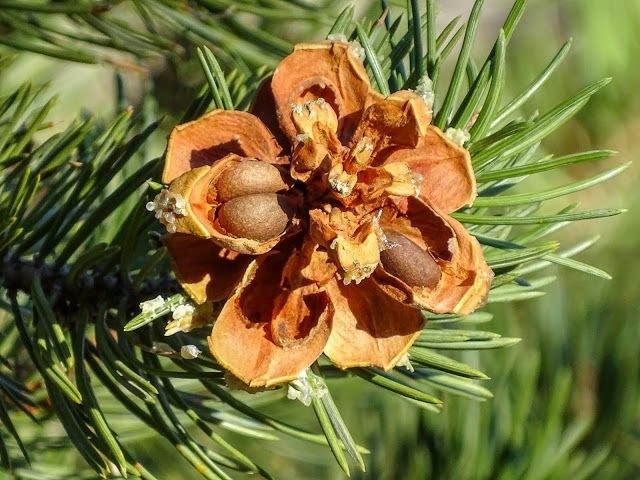
Growing pinyon pine trees from nuts has multiple advantages:
- Cost-effective: Seeds are inexpensive compared to purchasing saplings.
- Genetic diversity: Seed-grown trees develop unique characteristics and may adapt better to your local environment.
- Sustainable gardening: Propagating from seeds reduces reliance on nurseries and promotes homegrown food.
- Ecological benefits: Pinyon pines support wildlife and pollinators and prevent soil erosion.
- Nut production: Over time, seed-grown trees produce delicious pine nuts for culinary use.
Though pinyon pines grown from seeds take several years to produce nuts, the satisfaction of nurturing a tree from scratch makes the process worthwhile.
Step 1: Selecting Pinyon Pine Nuts
The first step in propagation is selecting healthy seeds:
- Mature seeds: Choose fully developed pinyon nuts collected in autumn when cones have opened. Immature seeds may fail to germinate.
- Intact shells: Avoid cracked, damaged, or moldy nuts. The hard shell protects the embryo and ensures viability.
- Freshness: Freshly collected nuts germinate more successfully than older, stored ones. If storing seeds, keep them in a cool, dry place.
High-quality seeds are essential for producing vigorous seedlings and strong trees.
Step 2: Preparing Pinyon Pine Nuts for Germination
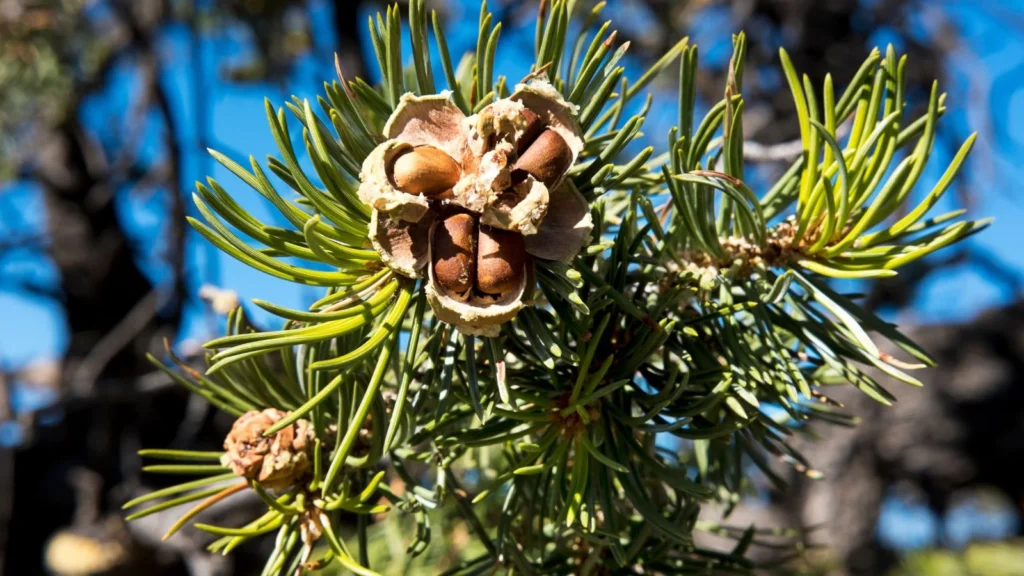
Pinyon pine seeds have a hard coat and natural dormancy that requires stratification—a period of cold treatment to encourage germination.
Cold Stratification Process
- Soak the seeds: Place pinyon nuts in water for 24–48 hours to soften the hard outer shell.
- Prepare a medium: Mix damp sand or peat moss in a plastic container or bag.
- Layer the seeds: Cover the soaked seeds completely with the damp medium.
- Refrigerate: Store the container in a refrigerator at 2–4°C (36–40°F) for 4–8 weeks.
- Check moisture: Ensure the medium stays damp but not soggy to prevent mold.
Stratification mimics winter conditions, signaling the seed that it is safe to germinate when the temperature rises.
Step 3: Planting Pinyon Pine Nuts
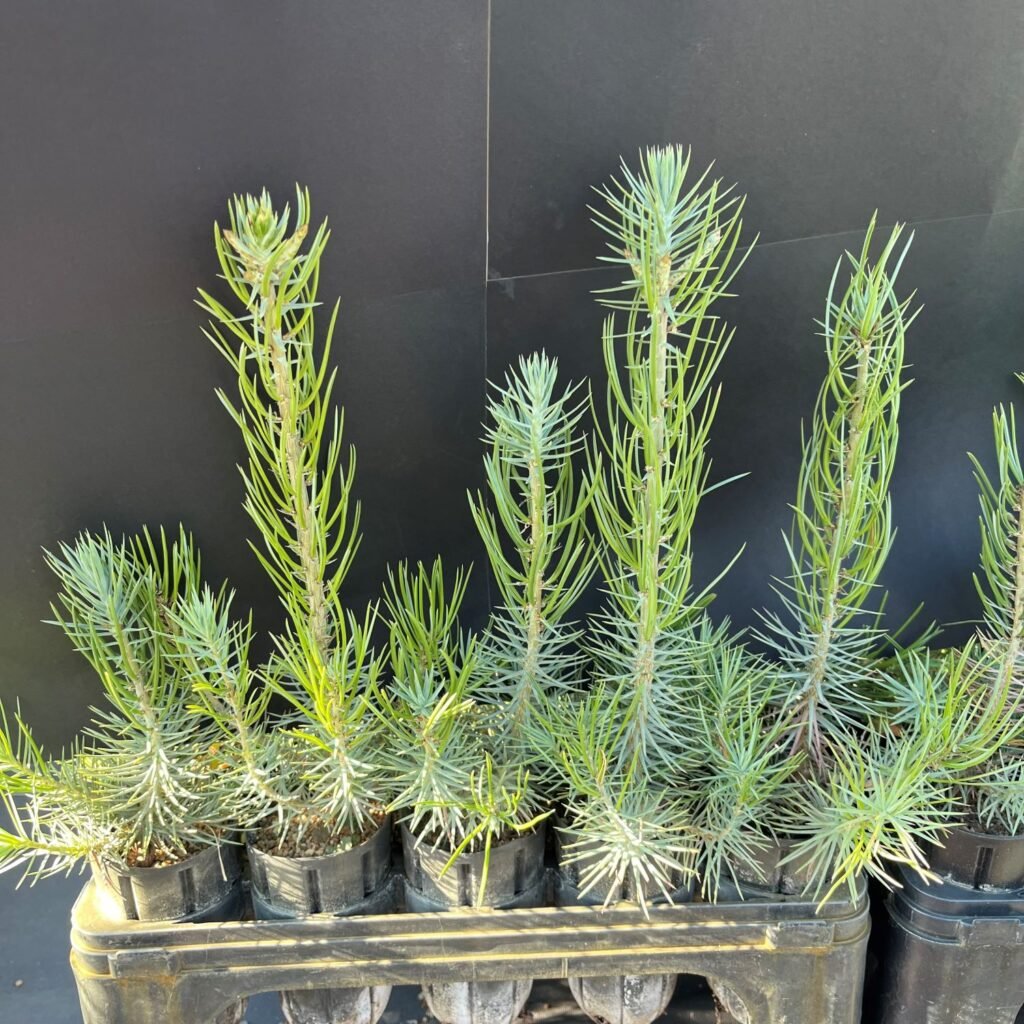
After stratification, the seeds are ready for planting:
Materials Needed
- Small pots or seed trays with drainage holes
- Well-draining soil mix
- Watering can or spray bottle
Planting Steps
- Fill pots with a well-draining soil mix (equal parts garden soil, compost, and sand).
- Plant each seed about ½–1 inch deep with the pointed end facing downward.
- Cover lightly with soil and water gently.
- Place containers in a bright area with indirect sunlight.
- Maintain soil moisture consistently but avoid overwatering.
Germination typically occurs within 3–6 weeks depending on seed quality and environmental conditions. Patience is key, as some seeds may take longer to sprout.
Step 4: Caring for Pinyon Pine Seedlings
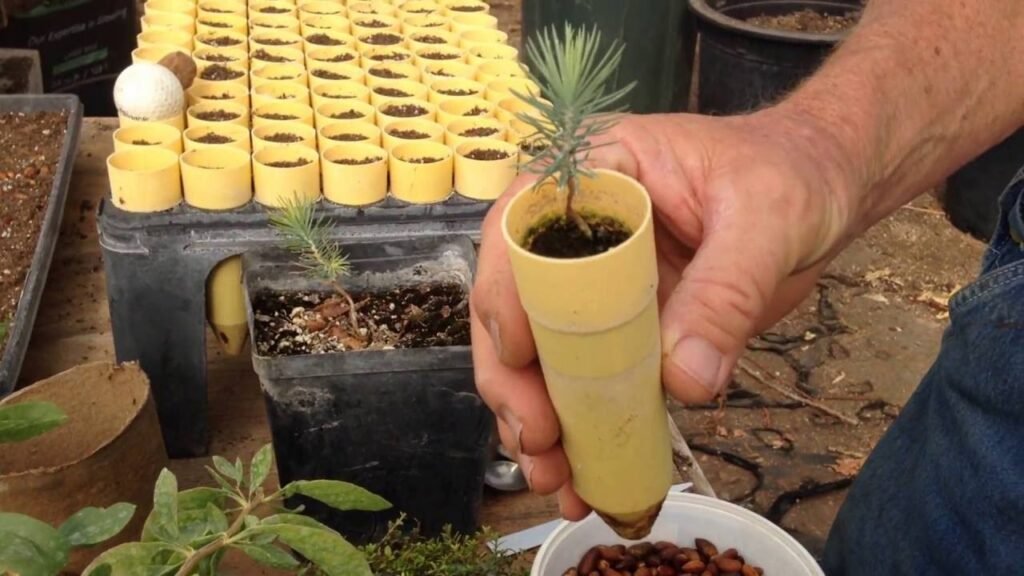
Once seeds germinate, seedlings require careful attention to thrive:
Watering
- Keep the soil evenly moist but not waterlogged.
- Deep watering encourages strong root development.
- Reduce watering slightly as seedlings mature to promote drought tolerance.
Sunlight
- Seedlings require at least 4–6 hours of sunlight daily.
- Gradually acclimate them to direct sunlight to strengthen stems and leaves.
Fertilization
- Use a balanced, slow-release fertilizer once seedlings develop their first true leaves.
- Organic liquid fertilizers can be applied every 2–3 weeks to boost growth.
Pruning
- Remove weak or damaged shoots to maintain a strong central stem.
- Early pruning helps establish a desirable structure for mature trees.
Pest and Disease Management
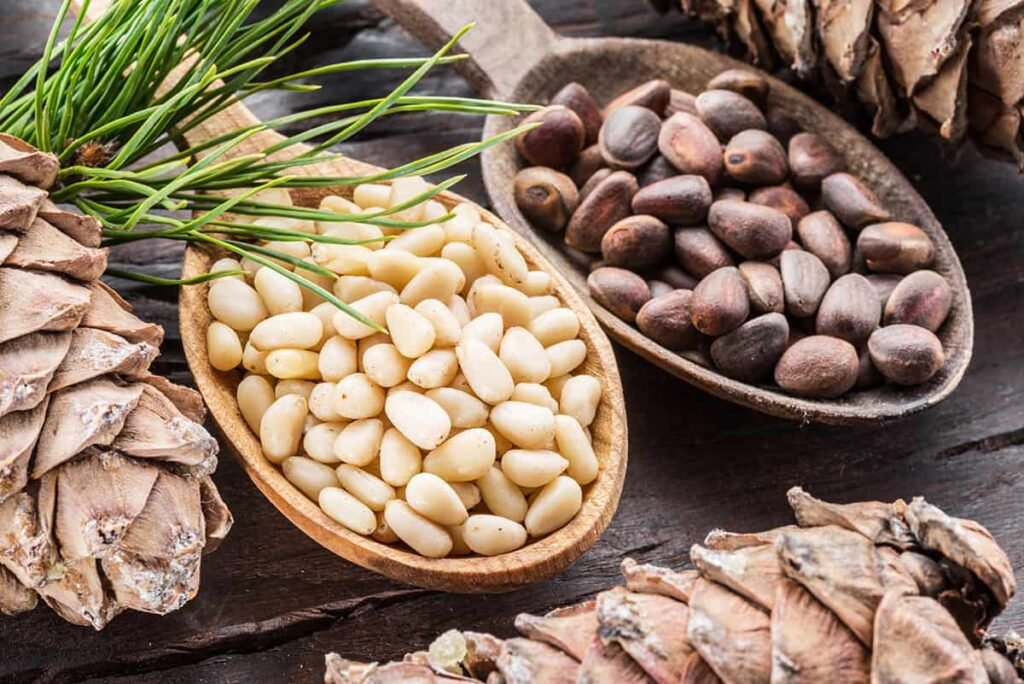
- Monitor seedlings for aphids, scale insects, and fungal infections.
- Apply neem oil or horticultural soap as needed.
- Proper spacing and airflow reduce disease risk.
Step 5: Transplanting Pinyon Pine Seedlings
When seedlings reach 6–12 inches tall, they can be transplanted into larger pots or directly into the garden:
Transplanting Steps
- Select a location: Pinyon pines thrive in full sun and well-draining soil. Ensure at least 6 hours of sunlight daily.
- Prepare the planting hole: Dig a hole twice as wide as the root ball and slightly deeper than the seedling’s current root depth.
- Amend soil: Mix garden soil with compost or sand for nutrient support.
- Transplant carefully: Remove seedlings gently, keeping soil around roots intact.
- Plant at same depth: Place seedlings in the hole at the same depth as in the pot, backfill, and water thoroughly.
- Mulch: Apply 1–2 inches of organic mulch around the base to retain moisture and reduce weeds.
Proper transplanting minimizes shock and supports healthy establishment.
Step 6: Long-Term Care for Pinyon Pine Trees
Pinyon pines are slow-growing but long-lived trees that require consistent care:
Watering
- Water deeply during dry periods to encourage deep root growth.
- Mature trees are drought-tolerant but benefit from occasional supplemental watering.
Fertilization
- Apply organic compost or slow-release fertilizers annually.
- Monitor foliage for signs of nutrient deficiency, such as yellowing needles.
Pruning
- Remove dead, diseased, or crossing branches to maintain structure and airflow.
- Light pruning promotes a balanced canopy and healthy growth.
Pest and Disease Management
- Watch for pine beetles, scale insects, and fungal infections.
- Use organic treatments and maintain proper spacing to prevent infestations.
Step 7: Flowering and Nut Production
Pinyon pines are wind-pollinated and may take several years to produce nuts:
- Male and female cones: Trees produce both male pollen cones and female seed cones.
- Pollination: Wind carries pollen to fertilize female cones. Planting multiple pinyon trees nearby improves nut set.
- Nut development: Seed-grown trees may take 5–10 years to produce a significant nut harvest.
With patience, pinyon pines can yield a small but valuable crop of nutritious pine nuts.
Step 8: Harvesting Pinyon Pine Nuts
Harvesting pine nuts requires care:
- Signs of maturity: Cones open naturally when seeds are ready.
- Collection: Collect mature cones before they fall to avoid seed loss or wildlife predation.
- Extraction: Dry cones in a ventilated area, then remove seeds carefully.
- Storage: Store seeds in airtight containers in a cool, dry place.
Proper harvesting ensures maximum viability and nut quality for consumption or future propagation.
Tips for Successful Pinyon Pine Propagation
- Select fresh, viable seeds for the highest germination success.
- Use cold stratification to break dormancy and encourage sprouting.
- Provide well-draining, nutrient-rich soil for seedlings.
- Maintain consistent moisture without overwatering.
- Ensure seedlings receive sufficient sunlight.
- Prune early to develop strong structure and healthy growth.
- Monitor for pests and diseases and treat organically.
- Be patient—pinyon pines are slow-growing but can live for hundreds of years and provide nuts over a lifetime.
Conclusion
Propagating pinyon pine trees from nuts is a rewarding and sustainable method of growing these beautiful, drought-tolerant trees. By selecting healthy seeds, properly stratifying them, caring for seedlings, and transplanting with attention to soil and sunlight, gardeners can successfully cultivate pinyon pines at home.
Although seed-grown pinyon pines take several years to produce nuts, the process is highly rewarding, providing not only delicious pine nuts but also evergreen beauty, shade, and ecological benefits. With patience, care, and dedication, your pinyon pine propagation project can result in healthy, productive trees that will enhance your garden or landscape for decades.
Growing pinyon pines from seeds is more than gardening—it’s a long-term investment in sustainability, nutrition, and the joy of nurturing nature from seed to mature tree.
